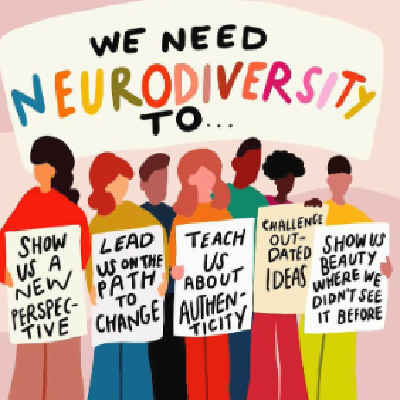Bias in Recruitment Algorithms and Neurodiverse Candidates | Shrestha | Psychologist and Asstt. Editor | The People Management
 Algorithms for recruitment have changed the hiring process in recent years. These tools, which are driven by machine learning and artificial intelligence (AI), promise increased talent acquisition scale, objectivity, and efficiency. Beyond their elegant exterior, though, is a serious worry: hiring algorithms might inadvertently reinforce prejudice, particularly against neurodiverse applicants. Organizations that support diversity and inclusion must comprehend how these technologies affect neurodivergent people and look into ways to
Algorithms for recruitment have changed the hiring process in recent years. These tools, which are driven by machine learning and artificial intelligence (AI), promise increased talent acquisition scale, objectivity, and efficiency. Beyond their elegant exterior, though, is a serious worry: hiring algorithms might inadvertently reinforce prejudice, particularly against neurodiverse applicants. Organizations that support diversity and inclusion must comprehend how these technologies affect neurodivergent people and look into ways to
create recruitment methods that are truly inclusive.
Comprehending Algorithms for Recruitment and Neurodiversity
The expression “neurodiversity” addresses the inherent differences in the way the human brain works, including disorders like attention deficit hyperactivity disorder (ADHD), dyslexia, dyspraxia, and autism spectrum disorder (ASD). In addition to their distinctive strengths—pattern recognition, creative problem-
solving, hyperfocus—neurodivergent people may also display behaviors or communication styles that deviate from neurotypical norms.
Recruitment algorithms frequently examine resumes, video interviews, psychometric tests, and other candidate data to rank and filter applicants. To find “ideal” candidates, these AI systems analyse past hiring data to find patterns. These algorithms run the risk of excluding competent neurodiverse applicants, though, if the training data reinforces preexisting biases in the workplace or favor conventional career paths and behaviors.
How Algorithmic Bias Affects Neurodiverse Candidates
Resume Parsing and Screening: Standardized formats and keyword matching are usually the foundation of automated resume screening tools. Neurodivergent applicants may have unusual career histories, especially gaps or frequent job changes, or employ unusual resume formats, which may result in their applications being rejected too soon.
Video Interview Analytics: AI-powered video evaluations employ body language, tone of voice, eye contact, and facial expressions to deduce a candidate’s personality and level of engagement. Neurodivergent people, particularly those with autism spectrum disorders, may exhibit distinct nonverbal cues that the algorithm misreads as insecurity or disengagement, arbitrarily reducing their scores.
Psychometric and Timed Tests: Due to time limits, rapid processing requirements, or test design that does not account for distinct cognitive styles, standardized tests may give candidates with anxiety disorders, ADHD, or dyslexia an unfair advantage.
Cultural Fit Algorithms: Many hiring platforms evaluate “cultural fit” by contrasting the conduct of prospective hires with that of existing staff. In absence of neurodiversity in the workforce, these algorithms might unconsciously favor neurotypical characteristics, thereby promoting homogeneity and omitting a range of cognitive profiles.
The Intersectional Impact
Algorithmic bias is a multifaceted phenomenon. Neurodivergent candidates encounter additional obstacles if they are members of marginalized groups, such as those based on socioeconomic status, gender, or ethnicity. For instance, AI systems trained on primarily neurotypical, male, or majority-group data may disproportionately disadvantage a neurodivergent woman of color. Because of this intersectionality, auditing and algorithm design must be done with nuance.
Bio-inclusive Hiring Technology: Overcoming Bias
Auditing and Transparency: Organizations must thoroughly audit AI tools to detect bias against neurodiverse traits. Transparency in algorithmic decision-making allows stakeholders to identify discriminatory patterns and demand accountability.
Inclusive Data Sets: Training recruitment models on diverse data, including examples of successful neurodivergent candidates, can assist AI in identifying a broader range of talent indicators.
Human-in-the-Loop Models: Combining AI efficiency and human judgment lowers the risk of unfair exclusion. Recruiters should review AI-flagged applications to ensure that promising candidates are not passed over due to algorithmic constraints.
Flexible Assessment Options: Offering alternative assessment formats, for instance work samples or project-based evaluations, in lieu of or in addition to video interviews and timed tests, accommodates an array of cognitive styles.
Candidate Empowerment: When AI tools are used, candidates should be informed and given the option of requesting accommodations or opting out of automated assessments without penalty.
As AI reshapes recruitment, ethical and inclusive design must take center stage. Addressing bias in recruitment algorithms is not only a compliance issue for organizations committed to using neurodiversity as a competitive advantage, but also a strategic imperative. Adopting neuroinclusive hiring technologies has the potential to unlock a wealth of untapped talent, foster innovation, and drive meaningful cultural change.
Companies can create workplaces where neurodiverse individuals are not only included but also truly empowered to thrive by moving beyond surface-level accommodation and confronting systemic biases embedded in hiring
technologies.


